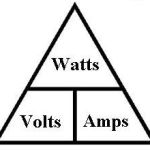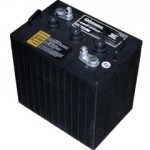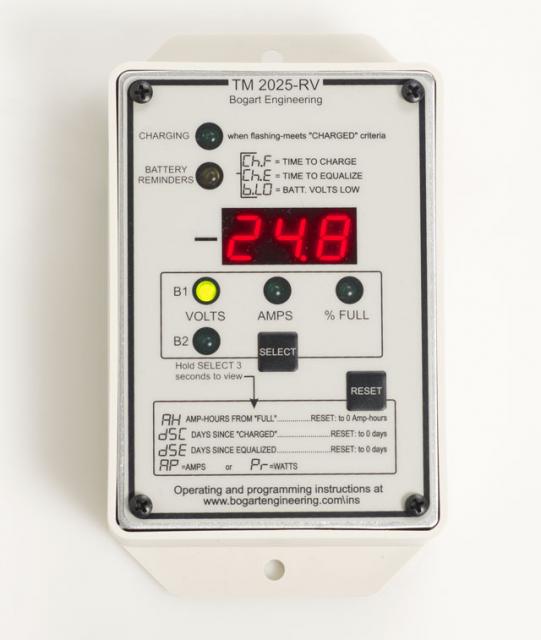Note from JD: Some related posts are solar system for Missy, solar install, solar install take 2, and Trimetric battery monitor install.
Like nearly everything else in life, it seems there are an infinite number of ways to approach the use of solar electric for a boat or motorhome. In my case, my motorhome has a big 7500 watt generator and it is always available. Therefore; it is not critical that I have sufficient solar power to provide for all of my needs. That said; I really prefer not to run the generator simply because it is noisy and I really enjoy being out in nature and hearing only nature. My real limitations are budget and roof space on which solar panels can be mounted. With that in mind, I could purchase as much solar as I can afford and/or will fit.
Of course, some people use their generator for air conditioning. It is very unlikely that one could put a solar and battery system on a motorhome that was sufficient to run air conditioning. So, why have a solar system if running the generator six or more hours per day is the norm? I dunno, can’t think of one. In my case, I live in the west so when it gets hot, I go up (altitude) to the cool air. I’ve ran my air conditioner while traveling (using the generator) but have never actually used it while parking camping.
As you can see, your use and requirements/limitations may be entirely different than others and that’s ok. We do not live in a one size fits all world.
If you’ve determined that a solar system fits into your style of use/camping, a good next step is an energy audit (energy budget, electricity budget, etc…) to determine how much electricity you use during an average day. Doing this is not hard but you have to it in watt hours per day. This means that you must convert each devices input to watts and then multiply by the number of hours that it is in use.
 This (math) is where people often begin getting lost. Trust me, this is not a big deal – it only requires some understanding of some basic electrical concepts. I won’t go into much detail as there are a bunch of web sites that focus on this. A Watt is simply a standard electrical unit of measure and it does not care about voltage. Converting to watts is easy because the calculation is W = V * A (watts = volts * amps). So, 1 amp at 12 volts = 12 watts. 1 amp at 110 volts = 110 watts. Thus; if a device consumes 50 watts/hour (per hour is the standard) and you use it for 4 hours, it will consume 200 watts (50 watts x 4 hours).
This (math) is where people often begin getting lost. Trust me, this is not a big deal – it only requires some understanding of some basic electrical concepts. I won’t go into much detail as there are a bunch of web sites that focus on this. A Watt is simply a standard electrical unit of measure and it does not care about voltage. Converting to watts is easy because the calculation is W = V * A (watts = volts * amps). So, 1 amp at 12 volts = 12 watts. 1 amp at 110 volts = 110 watts. Thus; if a device consumes 50 watts/hour (per hour is the standard) and you use it for 4 hours, it will consume 200 watts (50 watts x 4 hours).
One can usually read the power consumption on the label of most devices. It is worth noting that most devices list their worst case condition and not their typical condition. For example, an electric motor may consume a lot of amperage when it is starting but once running it drops way down to perhaps 25% of the startup amperage. A great option to actually measure the consumption of a 110 volt device is the Killawatt device. It plugs in between the device and power outlet and reports the actual use. Sometimes measuring is easy, sometimes an educated guess is required.
Once all this data is in hand, you simply add up the energy consumption for a day. You can pick whatever case you are comfortable with – I went with worst case (most energy used). For example, I may go for a month without turning on the television but I included it and the satellite receiver in my energy audit.
Refrigerator (on gas): 12 watts x 24 hours = 288
CPAP: 12 watts x 8 hours = 96
LED Lights: 12 watts x 4 hours = 48
LED TV: 50 watts x 4 hours = 200
Satellite Receiver: 50 watts x 4 hours = 200
Stereo: 12 watts x 4 hours = 48
Laptop: 75 watts x 8 hours = 600
Monitor: 100 watts x 4 hours = 400
Water Pump: 60 watts x .5 hour = 30
Misc. (LP Gas Detector, clocks, etc…) : 25 watts x 4 hours = 100
2010 watt-hours per day – worst case.
A more typical day would look like the following:
Refrigerator (on gas): 12 watts x 24 hours = 288
CPAP: 12 watts x 8 hours = 96
LED Lights: 12 watts x 2 hours = 24
Laptop: 75 watts x 4 hours = 300
Water Pump: 60 watts x .5 hour = 30
Misc.: 12 watts x 4 hours = 48
800 watt-hours per day – typical case. Assuming I’m off by 50%, let’s call it an even 1200 watt-hours per day.
These values (1200 – 2000 watt-hours per day) framed the size of the solar system that I would need to completely power my rig from solar. But, given my limited space for panels and budget, this did not dictate the sizing.
Obviously, the sun does not shine all the time. I live in the southwest were it shines a lot but it still sets in the evening, sadly. A rough rule of thumb is to expect 5 hours of charging from your system. This varies by location and time of year but is a reasonable place to start.
 To generate 2000 watt-hours of electricity during a 5 hour day, I would need 400 watts worth of solar panels (PV). However; one doesn’t get full rated output from the panels all the time. One might think that by installing 650 watts of solar panel capacity, in the best case possible, I could expect about 3250 watt-hours of electricity each day (650 watts x 5 hours = 3250 total watt-hours). However; that simply isn’t real. How does one deal with this? Well, I don’t know what the experts do but I can tell you what I did. I took some guesses based on my location, expected usage, and data reported by others. I think something along the lines of 70% rated power from the panels is more likely given shading, angles, and wiring/conversion loses. Then toss in the fact that the panels produce less power early in the morning and late in the day and you are probably down around 50% or less for that five hours each day. So, I’m guessing that about 1600 watt-hours per day would be a good and reasonable expectation. One could argue that here in the southwest, in the middle of the summer, the PV panels will be producing output far more than 5 hours per day. I suspect you are right. At this time of year (April), mine seem to start producing pretty early (8:30am) and don’t stop until pretty late (7:00pm). Let’s say 10 hours. That represents a pretty fantastic opportunity for producing electricity. However; it is best case and not what I am going to expect as being typical. If you are an optimist, you may go with that number but I suspect you might be disappointed.
To generate 2000 watt-hours of electricity during a 5 hour day, I would need 400 watts worth of solar panels (PV). However; one doesn’t get full rated output from the panels all the time. One might think that by installing 650 watts of solar panel capacity, in the best case possible, I could expect about 3250 watt-hours of electricity each day (650 watts x 5 hours = 3250 total watt-hours). However; that simply isn’t real. How does one deal with this? Well, I don’t know what the experts do but I can tell you what I did. I took some guesses based on my location, expected usage, and data reported by others. I think something along the lines of 70% rated power from the panels is more likely given shading, angles, and wiring/conversion loses. Then toss in the fact that the panels produce less power early in the morning and late in the day and you are probably down around 50% or less for that five hours each day. So, I’m guessing that about 1600 watt-hours per day would be a good and reasonable expectation. One could argue that here in the southwest, in the middle of the summer, the PV panels will be producing output far more than 5 hours per day. I suspect you are right. At this time of year (April), mine seem to start producing pretty early (8:30am) and don’t stop until pretty late (7:00pm). Let’s say 10 hours. That represents a pretty fantastic opportunity for producing electricity. However; it is best case and not what I am going to expect as being typical. If you are an optimist, you may go with that number but I suspect you might be disappointed.
Another consideration is the size of your battery bank (total amp hours). Mine is relatively small. Some people can use battery for two-three days without running the batteries too low (there is a healthy limit you know). I cannot. On the days that is cloudy, I’m parked in the shade, and/or consuming lots of electricity; I will simply need to start my generator. That is a nice option that not everyone has.
Of course, increasing the capacity of my battery bank is on the list!




Leave a Reply